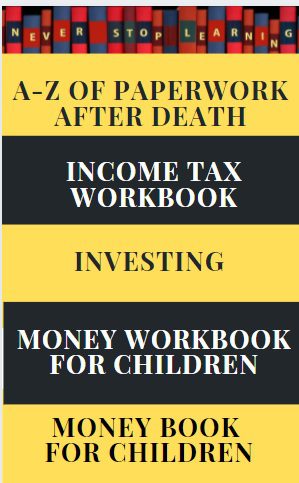Yes, there are numbers bigger than Million, Billion and Trillion as shown in the table below. Mostly the power of 10 increases by 3 for each new number, which means you add three extra zeros to the end of the number to get the next number. This happens till Quadragintillion or 10 ^123 and then it increases in powers of 30. Some of the famous big numbers are given below. There are different ways of saying big numbers in US, France and Europe. which we discuss in this article
- Googol (10^100 ),
- Skewer’s Number(10^130),
- Centillion (10^303)
- Googolplex(10^ googol )
- Skewes’ Number ((10^10)^10)^34
Name Google, was inspired by a very large number called Googol which is 10^100.
Table of Contents
Big Numbers
Names of larger numbers, however, have a tenuous, artificial existence, rarely found outside definitions, lists, and discussions of the ways in which large numbers are named. Even well-established names like sextillion are rarely used since in the context of science or astronomy, where such large numbers often occur, they are nearly always written using scientific notation, which is easier to say and less ambiguous.
| Name | Number of Zeros | Number |
|---|---|---|
| Ten | 1 | 10 |
| Hundred | 2 | 100 |
| Thousand | 3 | 1,000 |
| Ten thousand | 4 | 10,000 |
| Million | 6 | 1,000,000 |
| Billion | 9 | 1,000,000,000 |
| Trillion | 12 | 1,000,000,000,000 |
| Quadrillion | 15 | 1,000,000,000,000,000 |
| Quintillion | 18 | 1,000,000,000,000,000,000 |
| Sextillion | 21 | 1,000,000,000,000,000,000,000 |
| Septillion | 24 | 1,000,000,000,000,000,000,000,000 |
How do we write big numbers
To write a number, the digits are placed from left to right under the places labelled as Units, Tens, Hundreds, Thousands… etc., and read accordingly. For example, consider the number 393071425. The number is read as Three hundred and ninety-three million, seventy-one thousand four hundred and twenty five.
Commas in number
To read easily and understand the value we write big numbers with commas separating sets of three zeros. For example, you write one million not as 1000000. but as 1,000,000.
It’s easier to remember that a billion is written with four sets of three zeros than it is to count out 9 separate zeroes.
Scientific way of writing numbers
Scientific notation is a convenient way of writing very large or very small numbers so that it is easier to use in computations and compare A number written in scientific notation is of the form a * 10n where a is the non-zero number between 1 and 10 and n is the number of digits up to the decimal point for example
700 is written as 7 × 102
4,900,000,000 is written as 4.9 × 109
Long scale and short scale for Large Numbers
There are two ways of saying big numbers Short scale and Long scale.
For whole numbers smaller than 1,000,000,000 (10^9 ), such as one thousand or one million, the two scales are identical. For larger numbers, starting with 10^ 9, the two systems differ. The long scale increases by powers of one million, whereas the short scale increases by powers of one thousand.
For example, In science and finance and in the USA a trillion is 1,000 billion, which is written as a one followed by 12 zeros. This is also called a short scale.
But there is also a long scale, which is used in France and was previously used in the United Kingdom, in which a trillion means 10 to the power 18 – thus, a million million million (tri- as in tricycle, tripod, triangle, etc.)
Often in Europe, you hear “Milliarde” in German, “miljard” in Dutch, “milyar” in Turkish and “миллиард” in Russian which are standard usage when discussing financial topics. The names ending in -illiard for numbers of the form 10^6n+3. Ex 10^9 is Milliard while 10^16 is Billiard
Due to its dominance in the financial world by the US dollar, short scale was adopted for official United Nations documents.
The relationship between the numeric values and the corresponding names in the short scale and long scale is described as:
| Base -illion (short scale) |
Base -illion (long scale) |
Value | US, Canada and modern British (short scale) |
Traditional British (long scale) |
Traditional European (Peletier) (long scale) |
SI Symbol |
SI Prefix |
|---|---|---|---|---|---|---|---|
| 1 | 1 | 106 | Million | Million | Million | M | Mega- |
| 2 | 1 | 109 | Billion | Thousand million | Milliard | G | Giga- |
| 3 | 2 | 1012 | Trillion | Billion | Billion | T | Tera- |
| 4 | 2 | 1015 | Quadrillion | Thousand billion | Billiard | P | Peta- |
| 5 | 3 | 1018 | Quintillion | Trillion | Trillion | E | Exa- |
| 6 | 3 | 1021 | Sextillion | Thousand trillion | Trilliard | Z | Zetta- |
| 7 | 4 | 1024 | Septillion | Quadrillion | Quadrillion | Y | Yotta- |
| 8 | 4 | 1027 | Octillion | Thousand quadrillion | Quadrilliard | ||
| 9 | 5 | 1030 | Nonillion | Quintillion | Quintillion | ||
| 10 | 5 | 1033 | Decillion | Thousand quintillion | Quintilliard | ||
| 11 | 6 | 1036 | Undecillion | Sextillion | Sextillion | ||
| 12 | 6 | 1039 | Duodecillion | Thousand sextillion | Sextilliard | ||
| 13 | 7 | 1042 | Tredecillion | Septillion | Septillion | ||
| 14 | 7 | 1045 | Quattuordecillion | Thousand septillion | Septilliard | ||
| 15 | 8 | 1048 | Quindecillion | Octillion | Octillion | ||
| 16 | 8 | 1051 | Sedecillion | Thousand octillion | Octilliard | ||
| 17 | 9 | 1054 | Septendecillion | Nonillion | Nonillion | ||
| 18 | 9 | 1057 | Octodecillion | Thousand nonillion | Nonilliard | ||
| 19 | 10 | 1060 | Novendecillion | Decillion | Decillion | ||
| 20 | 10 | 1063 | Vigintillion | Thousand decillion | Decilliard | ||
| 21 | 11 | 1066 | Unvigintillion | Undecillion | Undecillion | ||
| 22 | 11 | 1069 | Duovigintillion | Thousand undecillion | Undecilliard | ||
| 23 | 12 | 1072 | Tresvigintillion | Duodecillion | Duodecillion | ||
| 24 | 12 | 1075 | Quattuorvigintillion | Thousand duodecillion | Duodecilliard | ||
| 25 | 13 | 1078 | Quinvigintillion | Tredecillion | Tredecillion | ||
| 26 | 13 | 1081 | Sesvigintillion | Thousand tredecillion | Tredecilliard | ||
| 27 | 14 | 1084 | Septemvigintillion | Quattuordecillion | Quattuordecillion | ||
| 28 | 14 | 1087 | Octovigintillion | Thousand quattuordecillion | Quattuordecilliard | ||
| 29 | 15 | 1090 | Novemvigintillion | Quindecillion | Quindecillion | ||
| 30 | 15 | 1093 | Trigintillion | Thousand quindecillion | Quindecilliard | ||
| 31 | 16 | 1096 | Untrigintillion | Sedecillion | Sedecillion | ||
| 32 | 16 | 1099 | Duotrigintillion | Thousand sedecillion | Sedecilliard | ||
| 33 | 17 | 10102 | Trestrigintillion | Septendecillion | Septendecillion | ||
| 34 | 17 | 10105 | Quattuortrigintillion | Thousand septendecillion | Septendecilliard | ||
| 35 | 18 | 10108 | Quintrigintillion | Octodecillion | Octodecillion | ||
| 36 | 18 | 10111 | Sestrigintillion | Thousand octodecillion | Octodecilliard | ||
| 37 | 19 | 10114 | Septentrigintillion | Novendecillion | Novendecillion | ||
| 38 | 19 | 10117 | Octotrigintillion | Thousand novendecillion | Novendecilliard | ||
| 39 | 20 | 10120 | Noventrigintillion | Vigintillion | Vigintillion | ||
| 40 | 20 | 10123 | Quadragintillion | Thousand vigintillion | Vigintilliard | ||
| 50 | 25 | 10153 | Quinquagintillion | Thousand quinvigintillion | Quinvigintilliard | ||
| 60 | 30 | 10183 | Sexagintillion | Thousand trigintillion | Trigintilliard | ||
| 70 | 35 | 10213 | Septuagintillion | Thousand quintrigintillion | Quintrigintilliard | ||
| 80 | 40 | 10243 | Octogintillion | Thousand quadragintillion | Quadragintilliard | ||
| 90 | 45 | 10273 | Nonagintillion | Thousand quinquadragintillion | Quinquadragintilliard | ||
| 100 | 50 | 10303 | Centillion | Thousand quinquagintillion | Quinquagintilliard | ||
| 101 | 51 | 10306 | Uncentillion | Unquinquagintillion | Unquinquagintillion | ||
| 110 | 55 | 10333 | Decicentillion | Thousand quinquinquagintillion | Quinquinquagintilliard | ||
| 111 | 56 | 10336 | Undecicentillion | Sesquinquagintillion | Sesquinquagintillion | ||
| 120 | 60 | 10363 | Viginticentillion | Thousand sexagintillion | Sexagintilliard | ||
| 121 | 61 | 10366 | Unviginticentillion | Unsexagintillion | Unsexagintillion | ||
| 130 | 65 | 10393 | Trigintacentillion | Thousand quinsexagintillion | Quinsexagintilliard | ||
| 140 | 70 | 10423 | Quadragintacentillion | Thousand septuagintillion | Septuagintilliard | ||
| 150 | 75 | 10453 | Quinquagintacentillion | Thousand quinseptuagintillion | Quinseptuagintilliard | ||
| 160 | 80 | 10483 | Sexagintacentillion | Thousand octogintillion | Octogintilliard | ||
| 170 | 85 | 10513 | Septuagintacentillion | Thousand quinoctogintillion | Quinoctogintilliard | ||
| 180 | 90 | 10543 | Octogintacentillion | Thousand nonagintillion | Nonagintilliard | ||
| 190 | 95 | 10573 | Nonagintacentillion | Thousand quinnonagintillion | Quinnonagintilliard | ||
| 200 | 100 | 10603 | Ducentillion | Thousand centillion | Centilliard | ||
| 300 | 150 | 10903 | Trecentillion | Thousand quinquagintacentillion | Quinquagintacentilliard | ||
| 400 | 200 | 101203 | Quadringentillion | Thousand ducentillion | Ducentilliard | ||
| 500 | 250 | 101503 | Quingentillion | Thousand quinquagintaducentillion | Quinquagintaducentilliard | ||
| 600 | 300 | 101803 | Sescentillion | Thousand trecentillion | Trecentilliard | ||
| 700 | 350 | 102103 | Septingentillion | Thousand quinquagintatrecentillion | Quinquagintatrecentilliard | ||
| 800 | 400 | 102403 | Octingentillion | Thousand quadringentillion | Quadringentilliard | ||
| 900 | 450 | 102703 | Nongentillion | Thousand quinquagintaquadringentillion | Quinquagintaquadringentilliard | ||
| 1000 | 500 | 103003 | Millinillion | Thousand quingentillion | Quingentilliard | ||
Google relation to Large Number
Google, Naam to suna hi hoga. The name was inspired by a very large number called Googol.
Before being called Google, its founders Larry Page and Sergey Brin called it BackRub, because the search engine relied on backlinks to estimate the importance of sites. The name, google was designed to be a twist on the word ‘googol’. It signified that the website would be providing a lot of information
The number googol has 100 zeros after it. So googol looks like this
The term googol was coined by the American mathematician Edward Kasner in his 1940 book, Mathematics and the Imagination. It is said that Kasner asked his then 9-year-old nephew, Milton Sirotta, what to name this ridiculously long number. Sirotta came up with googol.
The domain name for Google was registered on September 15, 1997, a year after Brin and Page began developing the project as Stanford University PhD students. And the first-ever Google search happened in 1998 when Page and Brin were demonstrating the accuracy of Google compared to other search engines to scientist John Hennessy, now known as the ‘godfather of Silicon Valley’ Hennessy typed in the name Gerhard Casper, who was the president of Stanford at that time.
What about Zillion, Gazillion and Jillion?
a zillion people were there
People have got a jillion excuses.
Zillion, Gazillion, Jillion are not actually real numbers. They are simply terms used to refer to an undetermined but extremely large quantity. They are also hyperbolic ie it’s an exaggeration. The word is modelled on actual numbers like million and billion, so it almost sounds like a real quantity.
Gazillion is not an actual number. Thus, the number of zeros in a gazillion is undefined. Gazillion is often used to describe a fancifully large number or exaggeration. The name gazillion came from a Greek word “Gazzen” which means one full revolution of the earth and has the suffix of Latin word “illion” (or -ion or -on) which means thousands.
Jillion. is again a term made up that means “a lot”
Get the biggest Possible Number
Arrange the digits 2, 6, 0, and 1 so that you create the highest possible four-digit number. And the smallest possible four-digit number
If You Can Only Move Two Matches, What Is The Biggest Possible Number?

Quiz Biggest Possible Number
Related Articles:




To answer to our fun little quiz, the largest possible number would be 983 ;))
I’m curious what will happen in 2025. What will happen next, what will happen to us. Harder and worse times are coming. Thanks for the info
“It’s easier to remember that a billion is written with four sets of three zeros than it is to count out 9 separate zeroes.” Doesn’t anyone proof read what they write? “four sets of three zeros” is not a billion!